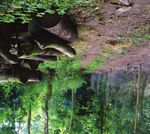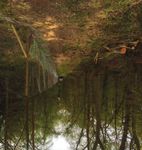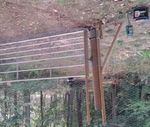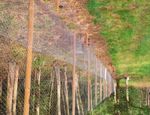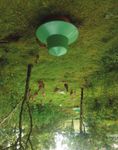PHEASANT RELEASE PEN How to create a pen that meets The Code of Good Shooting Practice's requirements - BASC
←
→
Page content transcription
If your browser does not render page correctly, please read the page content below
IMAGE: NICK RIDLEY
PHEASANT RELEASE PEN
How to create a pen that meets The Code
of Good Shooting Practice’s requirements
Pheasant releasing has taken place since the early Contents
1900s but grew in popularity in the 1960s when wild
- Overview
bird populations could no longer support shooting - Location of the release pen
demand. It is now common across much of the UK and - Stocking density
it is estimated that one in twelve of all woodlands in - Release pen construction
England contain a pheasant release pen1. - Re-entry holes
- Electric fence
- Other considerations
The management associated with the release of pheasants often brings
many benefits to the environment. This may include creating new habitat
in the form of new woodlands or game covers. Management practices
such as coppicing, thinning and ride maintenance enable light to reach
the lower layers of a woodland, benefiting many species of insects, birds
and plants.
Supplementary feeding of gamebirds can also benefit other farmland
birds, while general pest and predator management brings benefits to a
wide array of species.
However, release pens need to be well-thought-out and built with
consideration for their surroundings to ensure impacts to the
environment are minimised and the net impact of gamebird release and
associated management is positive for the environment. The Code of
Good Shooting Practice provides advice and guidance to shoot managers
and is there to help shoots reduce any negative effects while building on
the positives2.
By following the guidance in this guide, shoots can be confident that their
practices are compliant with The Code of Good Shooting Practice.
V1.0 1The following Golden Rules apply:
Shoot managers must endeavour to enhance wildlife
conservation and the countryside.
Shoots should release no more than 1,000 pheasants into
each hectare of release pen. In sensitive woods, such as
ancient semi-natural woods, no more than 700 birds per
hectare should be released.
Shoots should comply with The Code of Good Shooting
Practice at all times.
By law, if you keep 50 or more pheasants or partridges anywhere
in the UK then you must register on the Poultry Register.
Conduct regular habitat management work to enhance both release
pen and surrounding environment.
Location of the release pen Release pens should not take up more than about
one-third of the total woodland area on a shoot.
A release pen should contain a mosaic of three key Always avoid siting release pens in, or close
elements, roughly a third of each: to, locations that are particularly
Sunny, open spots environmentally sensitive.
Low cover to take shelter from predators Be aware of SSSIs (Sites of Special Scientific
and the elements Interest), SPAs (Special Protected Areas), SACs
Abundant roosting shrub cover (Special Areas of Conservation) and other
sensitive habitats and liaise with the landowner
For pens located in heavily shaded areas, remove and the relevant statutory authorities to avoid
trees/branches to create gaps in the canopy. This will potentially damaging activities.
allow ground flora to become established. Other Avoid siting release pens where there are areas
management may include: of natural running water, as this may impact on
Brashings, felled trees and deadwood can be left the watercourse/habitat and on the effective
to create cover and insect habitat management of the birds once released3.
Coppicing. The siting of release pens and feeding of game
near highways should be avoided.
Where possible, release pens should be sited out
Key points of public view.
Consider what parts of a woodland will be in the
sun at different times of the day, as birds often
follow the sun. This may influence the position of
a release pen as well as where feeders and drinks
are located throughout the season.
Ensure the pen has protection from the
elements. This may include good tree cover for
roosting, dead hedging, hedge creation
and/or hedgelaying.
Remember that a pen location that appears
favourable in spring may look very different come
mid-summer. Review the habitat in your pens
throughout the year to ensure they are in good
condition throughout.
To minimise damage to woodland rides, think
about vehicular access and potential issues
around getting to the pen, especially in
wet weather. Release pens need to be well thought out
Avoid moving release pens if possible - instead, to ensure impacts to the environment are
minimised, so the net impact of releasing
look at other management techniques, such as gamebirds with the associated management
reducing the density of pheasants released, to are positive for the environment
reduce the need to relocate pens.
V1.0 2Well planned access will help to
protect the surrounding habitats
Stocking densities
The Game & Wildlife Conservation Trust (GWCT)
recommends that to avoid damage to habitats,
shoots should release no more than 1,000 pheasants
into each hectare of release pen (400 per acre or
10sqm per bird). Pheasant released at the
correct stocking density will
In sensitive woodlands, such as Ancient Semi-Natural often hold much better
Woodlands, no more than 700 birds per hectare of
pen (280 per acre) should be released. Release pen construction
Where shoots exceed the recommended densities, Key points
they should be able to demonstrate that their Clear a 3-4-metre-wide track for your pen
particular circumstances and management regime perimeter and site the fence in the middle.
helps to avoid significant damage to woodland flora It is recommended that sustainably sourced,
and fauna. They might, for example, limit the period treated posts are placed no more than five
of time birds are in kept in release pens. metres apart, with straining posts at every
change of direction.
By law, if you keep 50 or more pheasants or Avoid square corners to prevent birds building up.
partridges anywhere in the UK, you must register on Make gates large enough for vehicular access.
the Poultry Register4. This allows efficient transport of feed and
equipment without the need for numerous
smaller journeys. Another gate at the far end of
the pen may be of use.
The fence should be 2 to 2.1m high, with roughly
30cm buried below ground or turned out and
pegged down to stop predators from digging their
way in.
It is a good idea to leave 30cm of netting turned
out and overhanging the top of the pen perimeter
to make it more difficult for foxes to climb over.
For the same reason, the wire should not be
too taut.
Do not attach netting/wire to standing trees.
Remove any overhanging branches, inside or out,
to a height of four metres.
Avoid square corners
V1.0 3Layout of re-entry funnel
BAFFLE
FUNNEL
ANTI-FOX GRID
PEN WIRE
ELECTRIC FENCE Its important that each section of the
anti-fox grid measurers no more than 9cm
LEAD-IN WINGS
Re-entry holes Other considerations
Re-entry funnels should be placed every 50m or
so with additional ones if the behaviour of the Ensure your shoot is complying with The Code of
birds dictate it. Good Shooting Practice.
Re-entry funnels should come back into the pen Ensure the release pen is kept litter free, tidy and
to prevent birds escaping. in good condition.
Lead-in wings outside the pen help to guide birds Consider the shoot’s impacts on the environment.
towards the re-entry point. These should be
protected with an anti-fox grid.
Electric fence Further guidance/reading
1
An electric fence positioned around the outside Ecological Consequences of Gamebird Releasing
perimeter of the pen serves as an extra deterrent for and Management on Lowland Shoots in England
predators – particularly foxes. (NEER016) A Review by Rapid Evidence Assessment
for Natural England and the British Association
Two strands of wire about 15-30cm from the ground, of Shooting and Conservation, First edition –
and 40-50cm from the pen, supported by electric July 2020
fence posts every five metres, are recommended. An
2
extra strand may be considered higher up the The Code of Good Shooting Practice
fenceline where mink or pine martens are present. (codeofgoodshootingpractice.org.uk)
3
Use a brush cutter or slasher and avoid herbicide to Capstick, L. A, Sage, R. B & Hoodless, A. (2019)
clear the ground before erecting the electric fence. Ground flora recovery in disused pheasant pens is
limited and affected by pheasant release density,
Electric fence units should be set up at least two 231:181-188
weeks prior to release with daily checks to ensure
4
no shorting. Poultry register – Poultry (including game birds):
registration rules and forms – gov.uk
Its important to keep the electric BASC – basc.org.uk
fence clear of debris to ensure
the fence works correctly GWCT publication – The Knowledge: Every gun’s
guide to conservation (2018)
GWCT – gwct.org.uk
Code of Practice for the Welfare of Gamebirds
Reared for Sporting Purposes
(publishing.service.gov.uk)
V1.0 4You can also read




